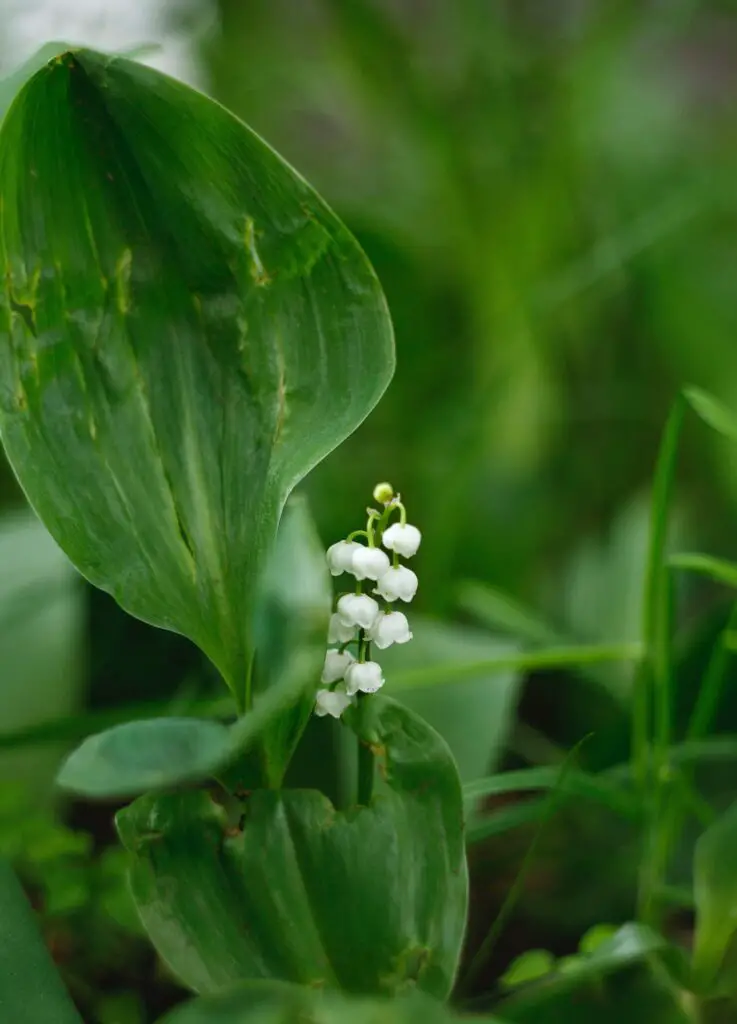Lily of the Valley (Convallaria majalis) is a charming and fragrant perennial plant known for its delicate bell-shaped white flowers and sweet scent. Traditionally found in shady woodland areas, these beauties can also be successfully cultivated indoors. Bringing the beauty of lily of the valley into your home allows you to enjoy its captivating fragrance and elegant appearance year-round. In this article, we will guide you through the steps to grow lily of the valley indoors, from selecting the right variety to providing the optimal growing conditions.


Table of Contents
Choosing the Right Variety
When it comes to growing lily of the valley indoors, it is important to select the right variety that thrives in container gardening. Some cultivars are better suited for indoor growing due to their compact size and adaptability to lower light conditions. Two popular indoor-friendly varieties include:
- Convallaria majalis ‘Prolificans’: This dwarf variety reaches a height of about 6 inches (15 centimetres) and produces an abundance of flowers.
- Convallaria majalis ‘Albostriata’: This variety features white-striped leaves that add a touch of visual interest to your indoor garden.
Preparing the Planting Medium
Creating the ideal growing environment for lily of the valley is crucial for successful indoor cultivation. Start by selecting a well-draining potting mix rich in organic matter. A mix of peat moss, perlite, and compost will provide the right balance of moisture retention and aeration. Fill a shallow container or a wide pot with the prepared potting mix, leaving some space at the top for planting. Lily of the valley has shallow roots, so a shallow container is sufficient.
Planting Lily of the Valley
Lily of the valley can be propagated through rhizomes, which are underground stems that produce new shoots and roots. Follow these steps for successful planting:
- Obtaining Rhizomes: Purchase healthy rhizomes from a reputable nursery or obtain them from an established plant. Look for plump, firm rhizomes with healthy white roots.
- Preparing Rhizomes: Soak the rhizomes in water for a few hours to hydrate them before planting. This helps prevent dehydration and promotes vigorous growth.
- Planting: Create shallow trenches in the potting mix, spacing the rhizomes about 1-2 inches (2.5 – 5 centimetres) apart. Place the rhizomes horizontally in the trenches and cover them with a thin layer of potting mix, ensuring they are barely covered. Avoid burying them too deeply, as this can hinder their growth.
- Watering: After planting, water the container gently to settle the soil and ensure adequate moisture. Avoid overwatering, as lily of the valley prefers slightly moist soil.
Providing the Optimal Growing Conditions
Lily of the valley thrives in cool and shaded conditions, similar to its natural woodland habitat. Consider the following factors to provide the best growing conditions for your indoor lily of the valley:
- Light: While lily of the valley prefers partial shade, it can tolerate low light conditions. Place your container in a spot that receives indirect sunlight for a few hours each day, such as near a north-facing window. Avoid placing it in direct sunlight, as this can scorch the leaves.
- Temperature: Lily of the valley prefers cooler temperatures between 60-70°F (15-21°C). Avoid exposing it to extreme heat or cold drafts. Maintain a consistent temperature to promote healthy growth.
- Humidity: Lily of the valley appreciates higher humidity levels. Place a tray filled with water near the plant to increase humidity, or use a humidifier to create the optimal growing environment.
- Watering: Keep the soil evenly moist but not waterlogged. Water the plant when the top of the soil feels slightly dry. Use room temperature water to avoid shocking the plant.
- Fertilisation: Feed your indoor lily of the valley with a balanced liquid fertiliser diluted to half strength every two weeks during the growing season. This provides the necessary nutrients for healthy foliage and flower production.
Maintenance and Care
To ensure the longevity and health of your indoor lily of the valley, follow these maintenance tips:
- Pruning: Remove any yellow or wilted leaves regularly to maintain the plant’s appearance and prevent the spread of diseases. Trim back spent flowers to encourage continuous blooming.
- Dividing: Over time, lily of the valley can become crowded in its container. Every two to three years, divide the rhizomes and replant them in fresh potting mix to promote better growth.
- Pests and Diseases: Monitor your indoor plant for common pests such as aphids, spider mites, and mealybugs. If an infestation occurs, treat the plant with an appropriate organic insecticide. Avoid overwatering to prevent fungal diseases.
Conclusion
Growing lily of the valley indoors allows you to enjoy the beauty and fragrance of this charming perennial plant year-round. By selecting the right variety, preparing the planting medium, and providing the optimal growing conditions, you can successfully cultivate lily of the valley in your indoor garden. Remember to choose a suitable location with indirect light, maintain the right temperature and humidity levels, and water and fertilise your plant appropriately. With proper care and attention, your indoor lily of the valley will reward you with its enchanting blooms and delicate scent, bringing a touch of nature’s elegance into your home.
